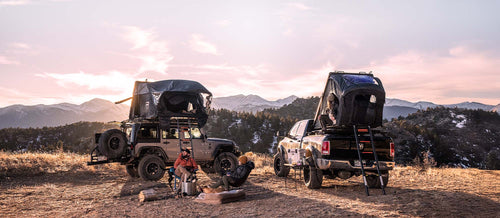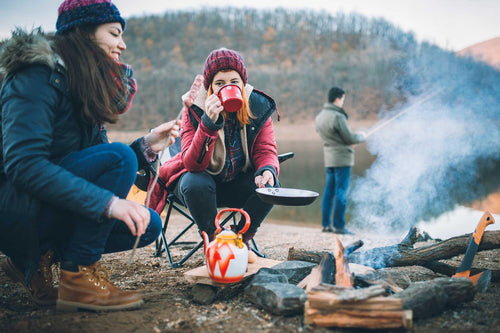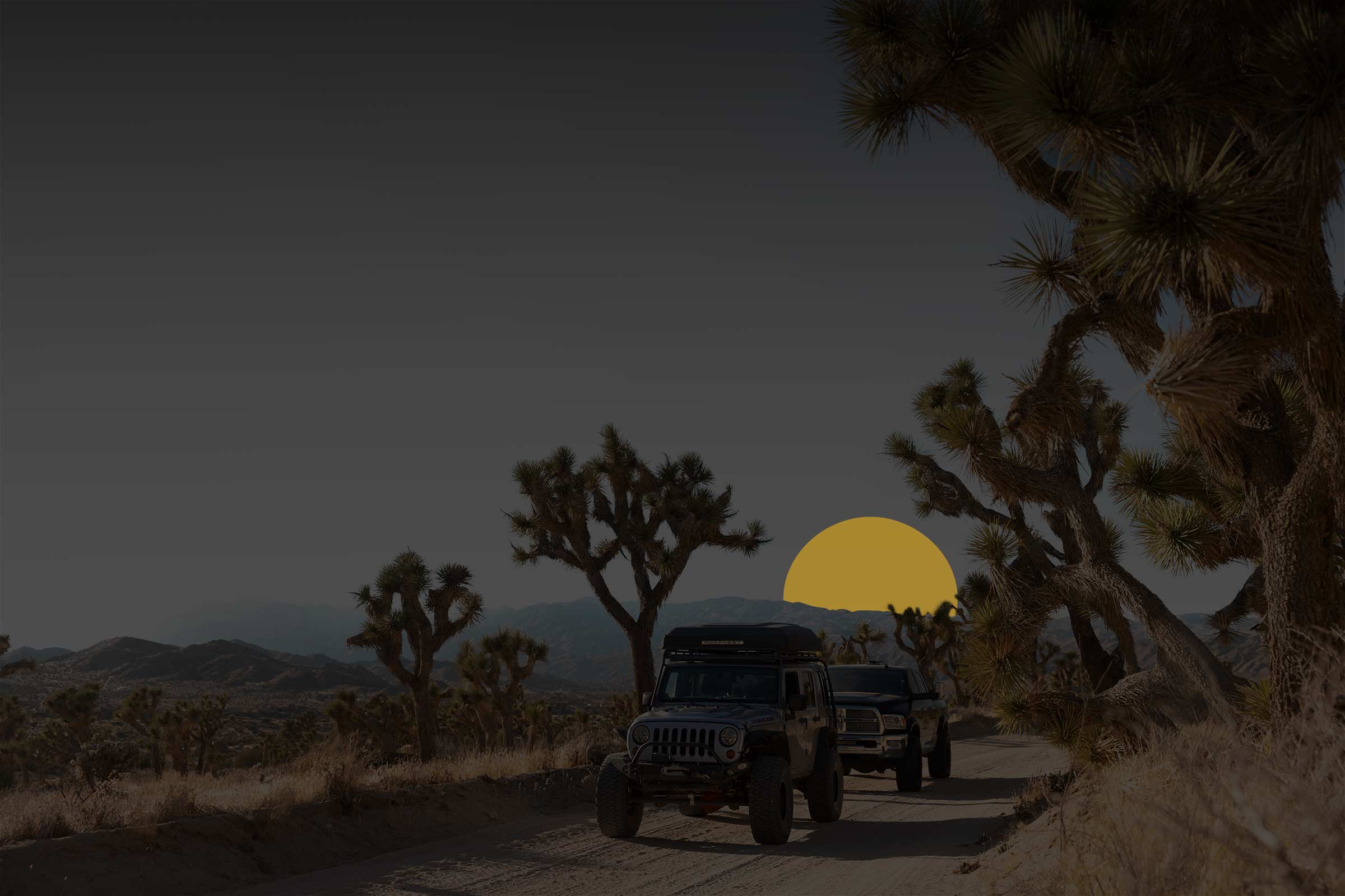Outdoor activities are a heck of a lot of fun, but they also mean having a heck of a lot of gear. Camping alone comes with a long list of must-haves to enjoy your trip to its fullest: outdoor cooking supplies, a way to stay clean, a camping power supply, and like 3 different kinds of sleeping bags. And a Roofnest, obviously. Then there’s all the other outdoor adventures that await. Hiking means boots, hats, and Camelpaks. Snow sports mean skis or snowboards, poles, boots, ski goggles, and more. Fishing, mountain biking, kayaking, climbing, overlanding — the list goes on and on. Each of these outdoor hobbies requires different gear that can easily fill up your garage (or your apartment). And when left unorganized, all this stuff piles up into the only kind of mountain we’re not interested in climbing. Plus, it makes it harder to get up and go when you’re itching for some outdoor time. Not to mention it increases the likelihood that you’ll forget an important piece of gear at home...only to realize it when you’re 3 hours down the road. Bummer. Keeping all your outdoor gear organized will take up less room and keep all the important pieces easier to access. So how best to organize all that stuff? It starts with sorting and minimizing, and ends with labelling and maximizing vertical space. Here are our 8 steps for how to organize your outdoor gear like a pro.
Step 1: Get Rid of What You Don’t Need
Before you start organizing what you have, minimize your gear down to the essentials. Lay out all your gear, and sort it into piles of like items. Put sleeping bags in one pile, ski goggles in another, hiking boots in another, etc. This is the easiest way to identify gear that you don’t really need, or that you have multiples of. Whether it’s an extra pair of winter gloves, layers you never use, or 3 different camping gadgets that all make coffee, set aside the stuff you can do without. You can either donate or sell these items. Heck, the money you make from selling gear can be invested in upping your organization system (or paying off your credit card from all the new gear you just bought).
Step 2: Designate a Single Space for Gear
If it’s possible, choose one place where all your gear will live. If you’ve got a garage, shed, storage unit, or an unfinished room in the basement, you’ll have options. The point of dedicating one space for all of your gear storage is to keep you from having to look for a certain item in 5 different places while you’re rushing to get packed in time to make it up a 14’er by sunrise. If you live in a smaller apartment, you might not have the luxury of a dedicated space. Don’t fret, you still have options. That brings us to our next step.
Step 3: Utilize Vertical Space
If you’re working with a small storage space, vertical space is king. You can use different walls and doors for storing different types of gear. For example, a hanging shoe organizer on the inside of a closet door is a way to sort hiking, climbing, and snow boots, as well as other small piece of gear (batteries, carabiners, water bottles, etc.). Label each pocket of the organizer to make it extra easy to find what you need. A pegboard or series of hooks on the wall can hold helmets, climbing rope, backpacks, and sleeping bags. String a rope across the wall with two hooks and you’ve got a line to hang shoes, bags, and other gear. A lot of these tips work in a larger storage space, too. But in a garage, you probably also have space for a multi-shelf rack, where you can store heavier stuff down low and lighter stuff up high. With shelving, storage totes are your best friend. That brings us to our next step.
Step 4: Use Labelled Totes
Heavy duty plastic totes are perfect for organizing your gear and keeping everything safe, clean, and dry. If you’re like us, you’ll want one or more big tote for each type of sport that you can label accordingly (hiking, skiing, etc.). You might also need an entire shelf for certain activities. After all, camping means a cooler, cooking gear, and more that can’t all be put into one tote. Within each tote, use smaller containers or bags to sort smaller items (batteries, goggles, etc.). These should also be labelled for quick access. Organize your totes based on how often you use them. If you’ve got a tote of fishing supplies but only go out once or twice a year, that can be pushed to the back of the shelf, or placed on a higher shelf. If you’re an avid climber, that gear should be front and center. Pro tip: Little baggies of desiccant (aka silica gel) will help keep your gear dry in storage. Put a couple in each tote. But not every piece of gear is best stored on a shelf. Sleeping bags waste a lot of precious space. Skis are long, and you don’t want to stack anything on top of them. This kind of gear should be hung up. What a perfect segue into our next step!
Step 5: Hang What You Can
In a garage, use ceiling hooks to hang bikes, sleeping bags, sleeping pads, and more. Hanging sleeping bags (in a storage bag) prevents them from getting dirty or dusty, so you’ll know they’re ready for use whenever you want. If you’re really into skiing or snowboarding and have multiple boards or pairs of skis, you can get a ski storage rack to store them for as little as $60. Mount it on the wall of your garage and you’re all set. Same goes for fishing rods. Cabela’s sells a wall-mounted rack for $18 that will hold six fishing rods.
Step 6: Use Baskets for Long, Light Items
A laundry hamper or other tall basket or bin is perfect to store long, light items like oars and ski poles. This is a low-cost storage solution for both small apartments and big garages.
Step 7: Pre-Pack Bags
If you have certain gear you always use for your favorite outdoor activities, you can make your life a whole lot easier by keeping a bag for that activity always ready to go. This approach kills two birds with one stone — your stuff is both organized and ready for action. A few examples include:
A hiking backpack
- Always keep it packed with toilet paper, a flashlight and/or headlamp, a knife or multi-tool, sunscreen, a first aid kit, water purifier, compass, map, binoculars, and any layers or clothes you only use while hiking, like a rain jacket or a hat.
- You can hang your hiking shoes right on the outside of the bag.
- When you’re going out on a day hike, you just grab the bag and throw in water and food and you’re all set.
A camping bag
- A larger bag can hold a tent, cooking gear, lighters, toilet paper, a first aid kit, bug spray, sunscreen, a flashlight, and more.
- The bag of tent poles can be strapped to the outside. Hang accessories like an electric lamp or large cookware from the outside.
A ski bag
- This can hold your base layers, goggles, ski socks, ski gloves, and ski jacket.
- Hang your helmet from the outside of the bag.
Tips for Storing Gear in Your Vehicle
View this post on InstagramWe’re not saying a Roofnest Falcon is a pot of gold but I mean.... 📸: @altanjames
If you need to take a lot of gear on the road, you’ll want to invest in external mounts for bikes, skis, and like. You can also mount a gear storage container on top of your vehicle. If you’re the proud owner of a Roofnest Falcon, you can install our Falcon Crossbars on top of it to mount more gear on top of your hard shell roof top tent. Any Roofnest model is an ideal space-saving investment. It means you don’t have to worry about where to put a tent in your car. Plus, you can store sleeping bags and blankets right inside of your Roofnest, freeing up even more room. Roof top tent camping is more comfortable, more convenient, and more space-friendly. Pretty smart, huh? At Roofnest, we’ve got all sorts of clever ideas to help you hack your outdoor lifestyle for maximum efficiency and maximum enjoyment. Check out more blogs on outdoor DIY tips »




